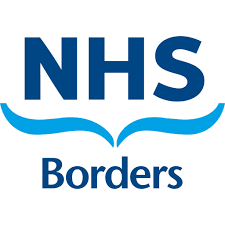Acute severe colitis

Truelove and Witt's criteria define severe ulcerative colitis
Bowels open > 6 times per 24 hours
Plus any one or more of the systematic manifestations:
- Haemoglobin < 10.5
- ESR > 30
- Pulse rate > 90
- Temperature > 37.5
The differential diagnosis includes bacterial infection (C. diff, Campylobacter, Salmonella, Shigella, E. coli 0157), viral infection if immuno-compromised (CMV), amoeba especially if travel history, Crohn’s colitis and ischaemia. Diverticulitis can occasionally mimic.
- Admit for IV steroids
- Immediately discuss with Gastroenterology Team
Monitoring
- Temperature and pulse – 4 hourly.
- Complete acute colitis observation chart.
- Abdominal examination findings: tenderness, bowel sounds.
Note increasing pulse/temperature/abdominal pain or tenderness may indicate deterioration or frank perforation and requires appropriate urgent investigation and d/w consultant.
Investigations
The aim is to confirm the diagnosis, assess severity and extent of disease and identify / predict complications early.
On admission
- Screen for infection with stool culture x3 + c.diff.toxin test.
- Unprepared flexible sigmoidoscopy and rectal biopsy should be done within 24 hours of admission.
- Bloods
- FBC, ESR
- U&E, LFT, alb, Glucose, CRP
- (Blood cultures if temp > 38°)
- Abdominal X-ray: look for stool-free colon (indicates extent involved); severe disease indicated by mucosal oedema (thickened wall), mucosal islands, dilated small bowel loops, colonic dilatation (diameter > 6cm).
- Height, weight and BMI.
Daily
- Bloods (as above) note GI consultants or GI CNS need to email labs to remove block on daily CRP.
- Abdominal X-ray if concerns about change in condition or dilatation on initial films. – in absence of these criteria less frequent AXR is acceptable.
Management
- Some of these patients will require colectomy during the same admission. It is essential that the Gastroenterology team is notified about patients as soon as possible after admission.
- Early referral to the GI specialist nurse to give patient support and information.
- Malnourished patients should be considered for early calorie supplementation, either orally, naso-gastrically or, if surgery is very likely, parenterally. They should be weighed and reviewed by the dietician. Patients with severe disease are often nauseated and anorectic for the first day or two: they can eat normally, but may prefer a light diet or just clear fluids in the early stages of their admission.
- IV fluids to correct dehydration, with at least 60 mmol potassium per day. Patients are highly prone to hypokalaemia due to the diarrhoea and steroid therapy and this requires close attention – particularly if anaesthesia for colectomy is imminent.
- Low molecular weight heparin – Dalteparin 5000 units daily for all patients admitted for IBD regardless of whether mobile or not. Acute IBD greatly predisposes to venous thrombosis.
- Antibiotics, IV amoxicillin 500mg TDS, gentamicin and metronidazole 500 mg TDS. Used in patients with toxic dilatation or febrile with a temperature > 37.8, preferably after stool and blood cultures have been sent. May be used to cover the possibility of C. diff and amoebae: where these are likely the metronidazole should be given orally. For UC in the absence of these features antibiotics are not routinely indicated.
- Oral 5-ASA can be withheld while on intravenous therapy (there is no evidence that they have a role in acute severe colitis), but restart this on discharge
- Avoid anti-diarrhoeals, opiates etc., and avoid NSAIDs if at all possible. If the patient is experiencing severe pain d/w consultant.
- The steroid regime is IV Methyl Prednisolone 30mg BD given in 50mls of NaCl over 15 minutes.
- In distal disease look for proximal constipation and treat with Laxido if present.
Of patients presenting with acute severe colitis, 50% will make a good response to the above regime, 25% will require colectomy, and 25% will make a partial response, requiring careful assessment and discussion re rescue second line immunosuppression vs surgery.
Day 3 assessment
This will identify those patients who are failing to respond. After three days on intravenous steroids in the context of severe colitis with systemic manifestations as defined above, the presence of
either
- Stool frequency > 8 times per 24 hours
or
- Stool frequency > 3 times + CRP > 45
gives an 85% likelihood of requiring colectomy1 . For patients with resistant proctitis these criteria do not generally apply.
If improvement is seen all treatments should be switched to oral on Day 5-7.
- Oral prednisolone 40 mg od for two weeks then wean by 5 mg per week
- Oral 5-ASA
Patients should be reviewed two weeks after discharge in the gastroenterology out-patient clinic.
Indications for colectomy
- Toxic dilatation of the colon: if present on admission, 24-48 hours of intensive medical therapy is warranted provided the patient is sufficiently stable. Failure to respond by 48 hours, or the development of dilatation during medical therapy mandates colectomy.
- Perforation
- Massive bleed
- Deterioration at any stage during admission may also necessitate urgent colectomy.
Indications for second line rescue therapy with anti TNF biologic
- All patients who are not improving and fail their day 3 assessment should be discussed with the on call gastroenterology registrar at the Western General Hospital, Usually they will arrange transfer to allow joint care with the WGH colorectal surgical team and a decision on rescue anti TNF biologic vs colectomy.
Complete acute colitis observation chart and Stool frequency chart.
References
1. Travis SPL et al. Gut 1996 38 905-910